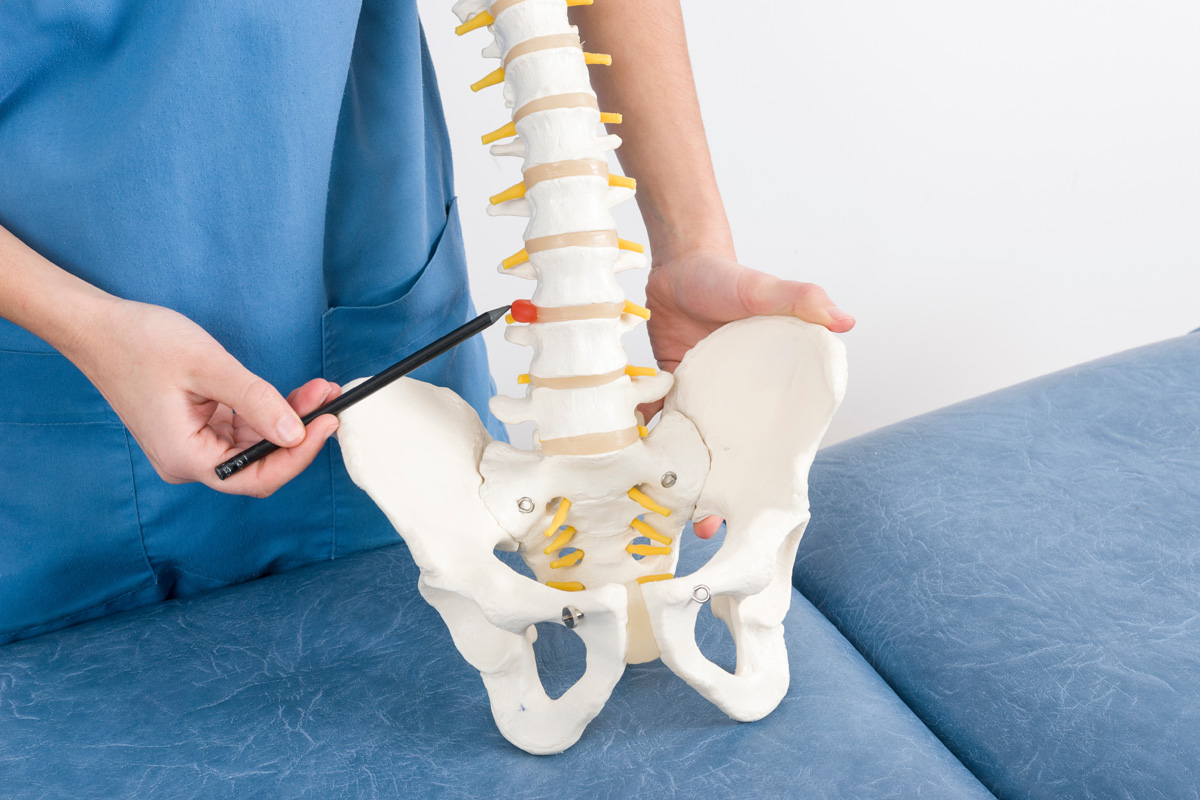A foraminotomy, a term derived from the Latin words for “opening” and “cutting out”, is a surgical procedure primarily focused on relieving pressure on nerves that are being compressed within the spinal foramina. By removing bone or tissue, space is created for these nerves, potentially reducing pain and other neurological symptoms. However, the procedure’s complexity, its potential risks, and its alternatives make it a topic of deep interest. With the continuous advancement in medical technology and the rise in minimally invasive techniques, how has the practice of foraminotomy evolved and what does this mean for patient outcomes?
Understanding Foraminotomy
In the field of neurosurgery, a foraminotomy is an important procedure aimed at relieving pressure on nerves that are compressed by the openings in the spinal column, known as foramina. This surgical intervention involves removing bone or tissue to enlarge the foramen and alleviate nerve root compression, effectively reducing pain and restoring function.
Foraminotomy cost factors play a significant role in patient decisions. These factors include the geographical location of the procedure, the surgeon’s experience, the complexity of the patient’s condition, and the type of healthcare coverage. According to recent data, the average cost of a foraminotomy in the United States ranges from $15,000 to $50,000, without insurance coverage.
When considering this procedure, understanding alternative pain management techniques is crucial. Options such as physical therapy, chiropractic care, medication, and nerve block injections can offer non-surgical relief. However, these should be discussed thoroughly with a healthcare provider to determine their effectiveness for the individual’s specific condition. A detailed assessment of the benefits and risks, costs, and alternative treatments is essential to make an informed decision about undergoing a foraminotomy.
Origin and History of Foraminotomy
The term Foraminotomy stems from Latin origins with ‘foramen’ meaning opening, and ‘otomy’ signifying a surgical procedure, hence referring to a surgical operation that enlarges the opening in a bone. Over the years, this procedure has undergone significant evolution, with advancements in surgical techniques and equipment augmenting its efficacy and safety. A chronological assessment of notable milestones in foraminotomy provides an elucidative perspective on its progression and current standing in medical practice.
Definition of Foraminotomy
Emerging from the Latin words ‘foramen’ meaning hole, and ‘tomy’ meaning cut, Foraminotomy refers to a surgical procedure aimed at relieving pressure on nerves that are being compressed as they exit the spinal column. This procedure is a significant advancement in spinal surgery, and has offered an alternative to more invasive surgeries.
- Foraminotomy alternatives: There are several less invasive alternatives to Foraminotomy, such as physical therapy, pain medication, and nerve block injections. However, when these alternatives fail to provide relief, Foraminotomy becomes a viable option for patients.
- Foraminotomy advancements: Over the years, Foraminotomy has seen significant advancements. Initially, it was an open surgery, but it has evolved into a minimally invasive procedure performed with the assistance of endoscopic instruments.
- Procedure: The Foraminotomy procedure entails the removal of bone and/or tissue that is compressing the nerve root.
Evolution of Foraminotomy Procedure
Historically, the Foraminotomy procedure has undergone remarkable transformations to enhance patient safety and improve outcomes. Initially, this surgical approach was invasive and carried significant risks. However, Foraminotomy innovations, largely driven by scientific research and technological advances, have led to less invasive, more precise techniques. Procedure advancements, such as the use of endoscopic tools and real-time imaging, have enabled surgeons to perform Foraminotomy with minimal disruption to surrounding tissues. Moreover, these advancements have contributed to shorter recovery times and less postoperative pain for patients. Over time, the evolution of the Foraminotomy procedure has demonstrated the medical field’s commitment to continually refining surgical approaches to improve patient care.
Notable Foraminotomy Milestones
How did the Foraminotomy procedure originate and what were the notable milestones in its evolution? The history of Foraminotomy is marked by significant advancements and milestones that have contributed to its current form.
- The initial inception of Foraminotomy dates back to the late 1930s, when Dr. James Watson first introduced the concept of decompressing nerve roots to ease spinal pain.
- Fast forward to the 1970s, Foraminotomy saw a surge in popularity and use with the advent of advanced surgical instrumentation, allowing for less invasive procedures and improved patient outcomes.
- The 21st century brought about further Foraminotomy advancements, such as the use of endoscopic techniques and laser-assisted procedures, offering increased precision and reduced recovery times for patients.
The Anatomy Involved
The anatomy involved in a foraminotomy pertains primarily to the spinal structures and the role of the foramina. The spinal structures include the vertebrae and the intervertebral discs, which are essential to understand due to their position relative to the foramina. The foramina, small openings on each side of the vertebrae, allow for nerve roots to exit the spinal cord, an important detail in the context of a foraminotomy.
Understanding Spinal Structures
Exploring the intricacies of spinal structures, it is vital to understand the key components such as vertebrae, intervertebral discs, and spinal nerves, all of which play a significant role in foraminotomy. This knowledge underscores the Spinal Health Importance and the need for effective strategies in Managing Spinal Pain.
- Vertebrae: These are the individual bones that stack up to form the spinal column, providing structural support and protection for the spinal cord.
- Intervertebral Discs: Positioned between each vertebra, these discs function as shock absorbers, preventing the vertebrae from rubbing together.
- Spinal Nerves: These nerves exit the spinal column through openings in the vertebrae, transmitting messages between the brain and the rest of the body. Their health and unimpeded function are crucial.
Role of Foramina
In the context of spinal anatomy, foramina serve an essential role as small openings or passages in the vertebrae through which spinal nerves exit the spinal column, facilitating communication between the brain and the rest of the body. This Foramina Functionality provides an important link in the Nervous System Connection. Each foramen, singularly referred to as a foramen, allows a specific nerve root to exit from the spinal canal. These nerves then branch out to different parts of the body, transmitting signals for sensation and muscle control. As such, the foramina’s structural integrity is critical for the proper functioning of the nervous system. Any obstruction or narrowing of these foramina, a condition known as foraminal stenosis, can impinge the exiting nerves, leading to symptoms like pain, numbness or weakness in the areas innervated by these affected nerves.
Identifying Candidates for Foraminotomy
Patients experiencing chronic back or neck pain due to nerve root compression, specifically those with conditions such as spinal stenosis or herniated disks, often emerge as suitable candidates for a surgical procedure known as foraminotomy. The procedure offers a solution for patients who have not responded to non-surgical treatments or have debilitating symptoms.
Identifying suitable candidates for foraminotomy involves consideration of the following factors:
- Severity of Symptoms: Candidates typically experience severe pain, numbness, or weakness in the limbs, which impairs their quality of life.
- Diagnostic Results: Imaging techniques such as MRI or CT scans confirm the existence of nerve root compression, validating the need for the procedure.
- Economic Factors: The foraminotomy cost analysis must be taken into account. The procedure can be expensive, and not all insurance policies cover it entirely. Hence, insurance coverage nuances must be understood before proceeding.
Healthcare professionals meticulously evaluate these factors to ensure that foraminotomy is the most suitable and effective treatment option for the patient. Understanding the patient’s specific condition, the predicted effectiveness of the surgery, and the financial implications are all critical in this decision-making process.

Pre-Procedure Preparations
Prior to undergoing a foraminotomy, certain preparatory steps are necessary to guarantee patient safety and procedural success. This includes performing necessary medical tests to ascertain the patient’s overall health and suitability for the procedure. Additionally, adhering to specific dietary restrictions pre-procedure is also essential for best surgical outcomes.
Necessary Medical Tests
Before undergoing a foraminotomy, several important medical tests are typically required to assess the patient’s overall health status and to guarantee the procedure’s safety and efficacy. Such tests are essential for diagnostic accuracy and proper test interpretation.
- Neurological Examination: This involves testing reflexes, muscle strength, walking ability, and sensory perception to identify signs of nerve root compression.
- Radiological Imaging: MRI and CT scans are typically employed to visualize the spinal structure, specifically the foramina, to identify areas of nerve compression.
- Electrodiagnostic Tests: Electromyography (EMG) or Nerve Conduction Velocity (NCV) tests can evaluate the electrical activity of the nerves and muscles, confirming the presence of nerve root compression.
These tests provide valuable information, ensuring the most effective and safe foraminotomy procedure.
Dietary Restrictions Pre-Procedure
In addition to these important medical tests, specific dietary restrictions are also required to be adhered to as part of the pre-procedure preparations for a foraminotomy. These dietary restrictions often revolve around the patient’s unique nutritional status, including any known food allergies. The impact of food allergies on the procedure can be significant, potentially causing adverse reactions during or after surgery. Hence, it is essential to provide a detailed history of any food allergies to the medical team.
Furthermore, pre-procedure hydration is also an essential factor that needs special attention. Adequate hydration before the procedure can help maintain blood volume and pressure, thereby facilitating better outcomes. However, the consumption of fluids may be limited in the hours immediately preceding the operation to reduce the risk of aspiration during anesthesia.
Step-by-Step Foraminotomy Procedure
One must understand that a foraminotomy procedure commences with the patient being placed under general anesthesia, setting the stage for a meticulous surgical journey aimed at alleviating spinal nerve compression. Owing to significant Foraminotomy advancements, the surgeon uses specialized surgical instruments, including a microscope and microsurgical techniques, to guarantee precision.
The step-by-step Foraminotomy procedure can be broken down as follows:
- Incision and Access: The surgeon creates a small incision in the affected area and uses retractors to access the vertebra.
- Bone and Ligament Removal: With the help of high-speed drills and precision tools, the surgeon removes a small portion of the bone and ligament to widen the foramen, thereby alleviating nerve compression.
- Verification and Closure: The surgeon then verifies the successful decompression of the nerve using intraoperative imaging before closing the incision.
The meticulousness of the procedure, combined with the complex anatomy of the spine, demands an experienced surgical team and advanced instruments. However, it’s worth noting that although the procedure is highly effective, it’s not without potential risks, which should be discussed in detail with the medical team prior to surgery. This step-by-step guide provides a detailed overview of the Foraminotomy procedure.
Post-Procedure Care and Recovery
Following the completion of a meticulous Foraminotomy procedure, a thorough post-operative care plan is implemented to aid in the patient’s recovery and promote excellent outcomes. This plan encompasses various elements including pain management strategies and physical therapy benefits.
One of the critical aspects of post-procedure care involves pain management strategies. Analgesics, typically non-steroidal anti-inflammatory drugs (NSAIDs), are prescribed to alleviate discomfort. The objective is to offer relief, enhance mobility, and facilitate a swift return to everyday activities. However, their administration is consistently monitored to prevent any potential dependency.
Physical therapy, another essential element of the recovery process, is introduced once the patient’s condition stabilizes. It offers numerous benefits, such as strengthening muscles, improving flexibility, and restoring range of motion. A well-structured physical therapy program aids in reducing post-operative stiffness and enhancing spinal function. It is tailored to each patient’s specific needs and gradually intensified to challenge the patient’s improving strength and flexibility.
Furthermore, patients are educated about the importance of maintaining a healthy lifestyle, including proper sleep, nutrition, and regular exercise, to support the healing process. Consequently, a thorough post-operative care plan, combining effective pain management and physical therapy, provides a solid foundation for excellent recovery post-Foraminotomy.
Potential Risks and Complications
Despite the meticulous planning and execution of a Foraminotomy, the journey towards recovery can be fraught with potential risks and complications. These can vary based on individual patient experiences and the specific surgical circumstances.
- Infection: While surgeons maintain sterile environments, post-surgery infection is a risk. It can be mitigated with antibiotics, but if severe, additional surgery may be required.
- Nerve Damage: Although the procedure aims to alleviate nerve pain, there’s a risk of unintended nerve damage during surgery, potentially causing numbness or weakness.
- Reherniation: The removal of bone or tissue may lead to instability in the spine, causing reherniation.
It’s essential for patients to contemplate these risks alongside the potential benefits of the surgery. Additionally, surgery alternatives should be thoroughly explored. Non-surgical treatments, such as physical therapy, medications, or injections, can sometimes provide relief without the risks associated with surgery.

Success Rates of Foraminotomy
In evaluating the efficacy of Foraminotomy, it has been observed that the procedure has a notable success rate, although this can vary depending on individual patient factors and the specific circumstances of the surgery. A large body of peer-reviewed literature suggests that overall, approximately 70%-90% of patients report significant relief from symptoms post-surgery.
However, the success rate is influenced by a myriad of factors. Among these, insurance coverage debates have been a notable point of contention. The discrepancy in insurance coverage can affect access to this procedure, which could potentially impact the overall success rates recorded. Additionally, the degree of a patient’s spinal stenosis, the presence of other comorbid conditions, and the surgeon’s experience and skill can also significantly influence the outcome.
The impact of technological advancements cannot be overstated either. Improvements in surgical techniques and equipment have made Foraminotomy a safer and more effective procedure, thereby contributing to its high success rates. Modern imaging technologies, for instance, allow for greater precision during surgery, minimizing risks while maximizing benefits. Nevertheless, continued research and advancements are necessary to further improve the success rates of Foraminotomy.
Foraminotomy Vs Other Treatments
While the success rates of Foraminotomy are impressive, it is also important to conduct a comparative analysis with other treatment modalities to fully understand its relative effectiveness and suitability.
- When compared to non-surgical treatments like physical therapy, Foraminotomy often provides more immediate and lasting relief from symptoms. However, alternative therapies such as acupuncture and chiropractic care may be suitable for patients with mild to moderate symptoms, who prefer non-invasive treatments.
- Foraminotomy is also often compared with other surgical procedures like discectomy and laminectomy. While these surgeries can be effective, they are often more invasive than Foraminotomy, and recovery may take longer.
- Regarding insurance coverage, Foraminotomy is generally covered by most insurance plans as it’s a recognized surgical procedure. However, insurance coverage for alternative therapies may vary widely, requiring patients to pay more out-of-pocket costs.
Real-life Foraminotomy Experiences
Patient testimonials illuminate the real-world outcomes and experiences of those who have undergone Foraminotomy, offering invaluable insights into the procedure’s effectiveness and recovery process. From patient perspectives, the surgical aftermath is generally positive, with many reporting significant relief from chronic neuralgia.
For instance, an extensive number of patients have reported marked improvement in nerve-related symptoms such as numbness, tingling, and weakness post-surgery. Moreover, some patients have seen a dramatic decrease in their reliance on pain medication, indicating the procedure’s efficacy in addressing spinal nerve compression.
However, it is important to note that the recovery timeline can vary. While some patients experience symptomatic relief immediately after the procedure, others may require a few weeks before they notice significant improvements. Physical therapy and rehabilitation are often integral components of the recovery process following a Foraminotomy, aiding in muscle strength restoration and promoting optimal spinal alignment.
In terms of adverse effects, rare cases have documented postoperative complications such as infection, blood clots, and nerve damage. However, these risks are generally low, especially when the procedure is performed by a skilled and experienced surgeon. This underscores the importance of choosing a qualified medical professional for such a procedure.
Frequently Asked Questions
What Is the Typical Cost of a Foraminotomy Procedure?
The cost of a foraminotomy procedure varies widely based on factors such as location, surgeon’s expertise, procedure risks and recovery time. On average, it ranges from $20,000 to $50,000, including surgical and hospitalization fees.
Are There Non-Surgical Alternatives to Foraminotomy?
Yes, non-surgical alternatives to foraminotomy include physical therapy, pain management, and steroid injections. These options, however, may vary in their success rates and recovery timeline compared to foraminotomy.
Can Foraminotomy Be Performed as an Outpatient Procedure?
Yes, a foraminotomy can often be performed as an outpatient procedure. Procedure risks include infection and nerve damage. The recovery timeline typically involves several weeks of restricted activity to promote best healing.
How Long Does the Relief From Foraminotomy Usually Last?
The relief duration from a foraminotomy varies among patients. Typically, with a successful procedure and adherence to a recommended post-foraminotomy exercise regimen, pain relief can last several years, depending on the individual’s recovery timeline.
Is Foraminotomy Covered by Most Health Insurance Plans?
Foraminotomy’s insurance eligibility varies among providers. Most health insurance plans cover it, subject to the specifics of the policy and the pre-authorization process. It’s advisable to confirm coverage details with your insurance provider beforehand.

